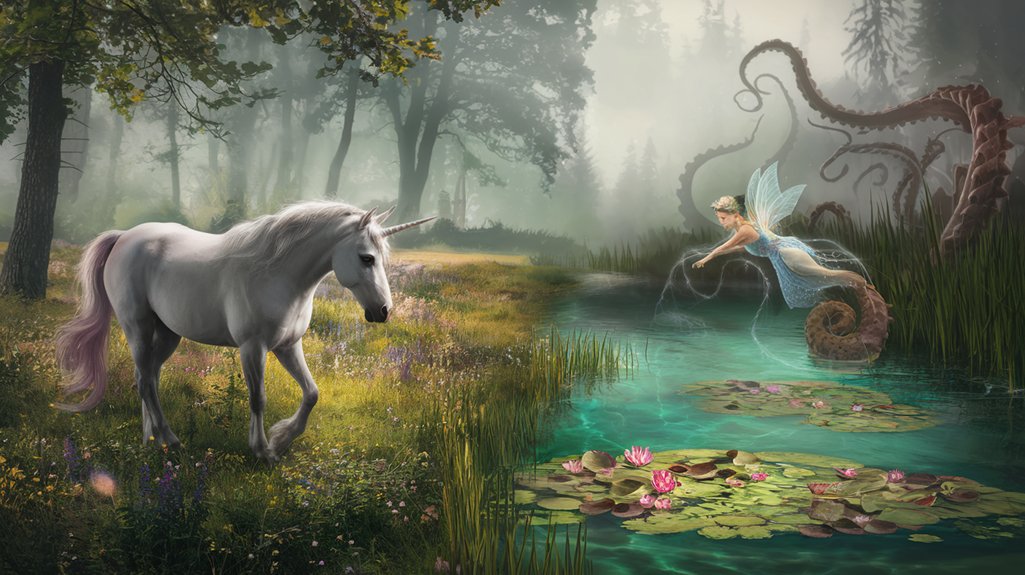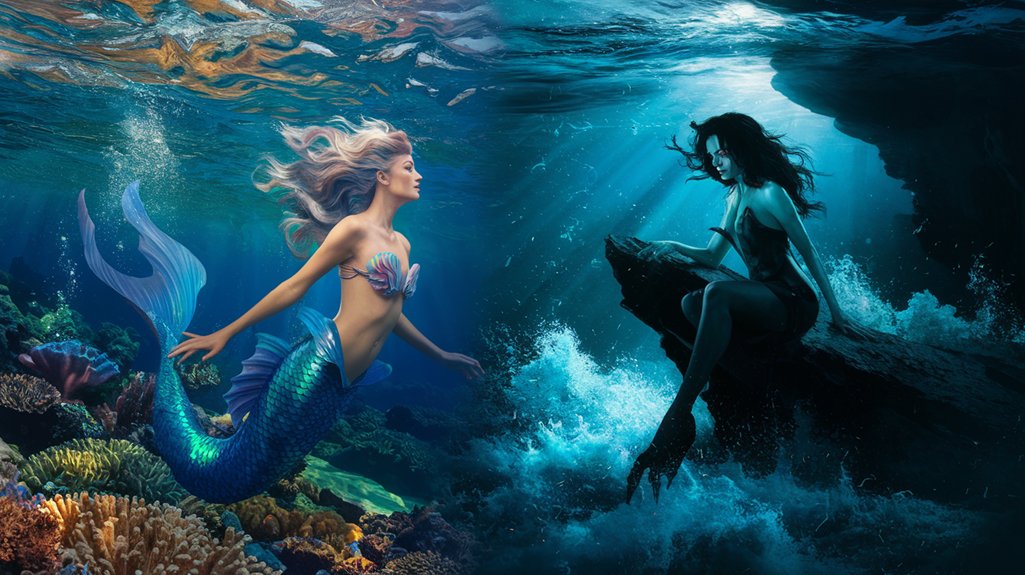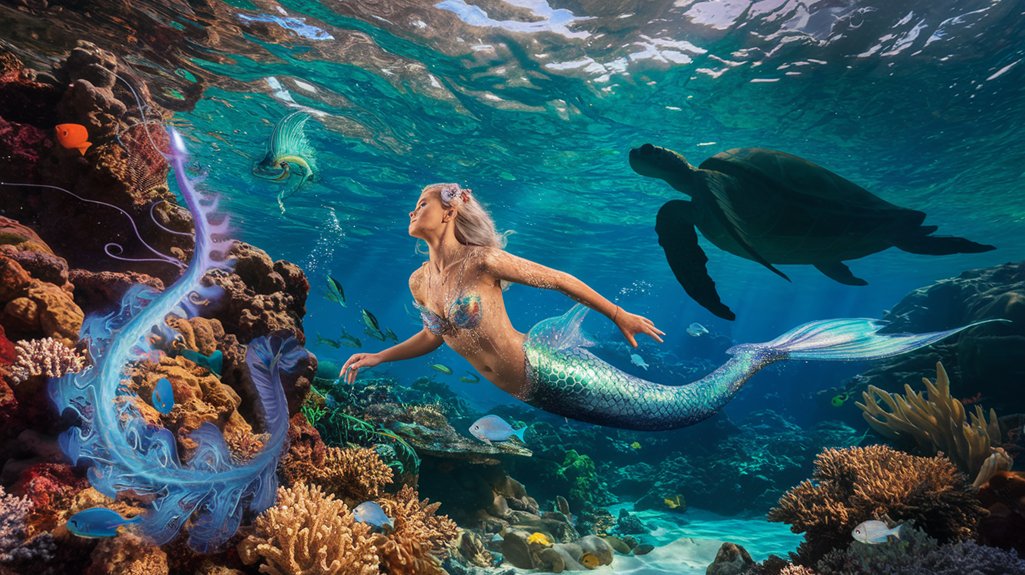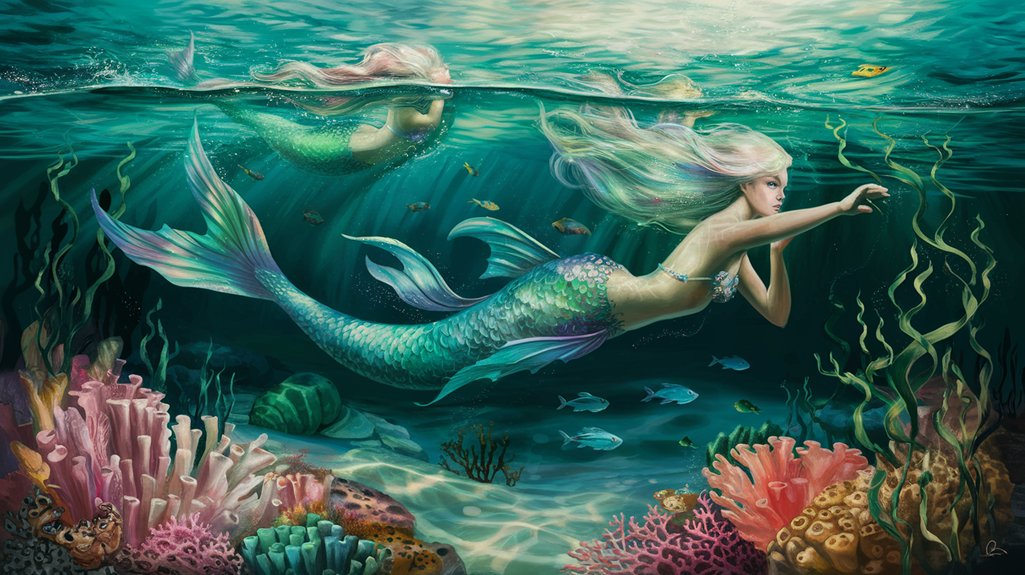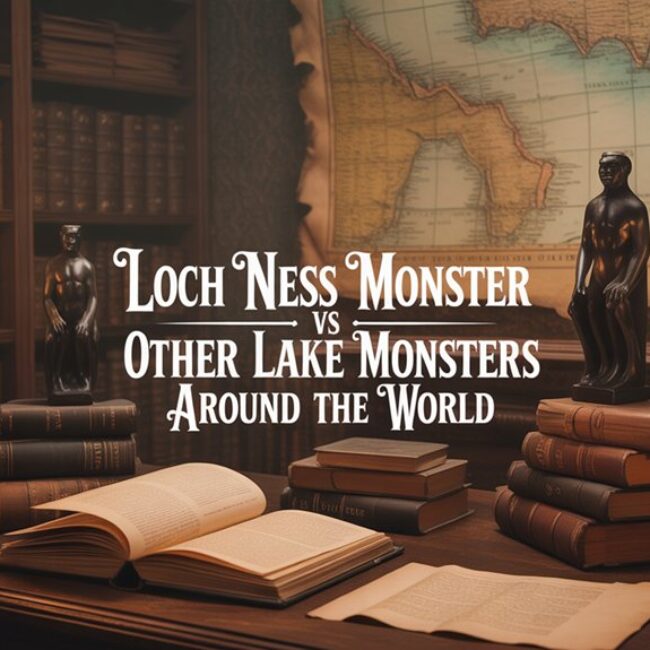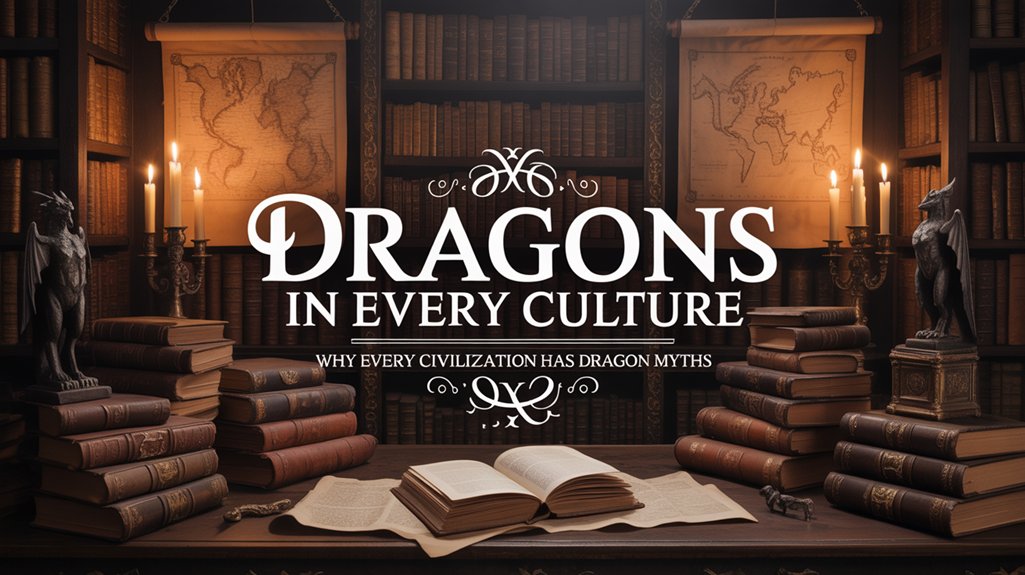When you consider Christopher Columbus’s 1493 logbook entry detailing a mermaid sighting, it piques scientific curiosity. Could these historical accounts have factual roots? Modern reports and unexplained underwater anomalies might suggest a biological basis for mermaids. Sonar data often reveals mysterious forms beneath the waves, challenging our understanding of marine life. Cultural myths and eyewitness accounts from various regions only deepen the enigma, prompting you to question what truly lies beneath the ocean’s surface.
Table of Contents
ToggleKey Takeaways
- Modern mermaid sightings often occur in regions rich with ocean mysteries, fueling intrigue and speculation.
- Historical sailor tales, like Columbus’ 1493 account, contribute to the enduring allure of mermaid mythology.
- Mysterious underwater sounds and sonar anomalies raise questions about unexplained aquatic phenomena.
- Cultural mermaid myths embody themes of allure and danger, reflecting humanity’s complex relationship with the sea.
- Mermaids in modern media symbolize mystery and transformation, maintaining their relevance in contemporary narratives.
Historical Accounts of Mermaid Encounters
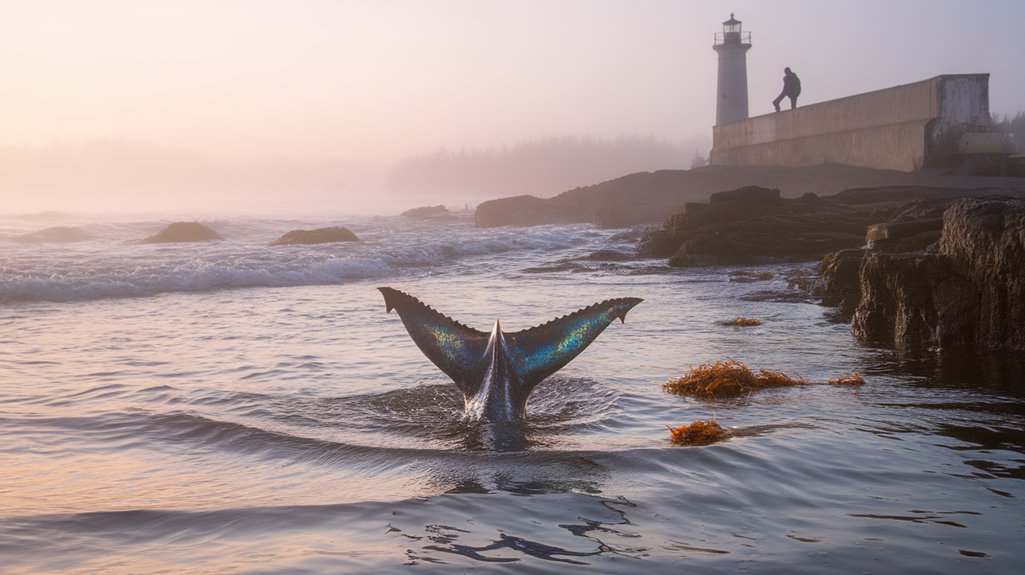
Throughout history, accounts of mermaid encounters have emerged from diverse cultures, often blending myth and reality in fascinating ways. When you examine ancient scrolls, you’ll find references to these enigmatic sea creatures dating back to early civilizations. The Assyrian goddess Atargatis, often depicted as a fish-tailed figure, represents one of the earliest known mermaid-like beings.
Sailor tales have also played a significant role in perpetuating the lore of mermaids. Mariners, navigating treacherous waters, frequently reported sightings of these mystical beings. For instance, the well-documented account by Christopher Columbus in 1493 claims he encountered mermaids near the Caribbean. However, scientific analysis often suggests that such sightings might be misinterpretations of marine animals like manatees or dugongs.
Mysterious Sightings Across the Globe
Mermaid sightings continue to captivate the imagination, yet modern reports demand a closer examination of their validity. Across the globe, individuals claim to witness mermaid-like figures, sparking intrigue and skepticism. You might wonder if these accounts hold any scientific merit. Some sightings occur in regions rich with ocean mysteries, where unusual marine life might be mistaken for mythical beings. Analyzing these reports reveals patterns: sightings often happen in low-light conditions, complicating clear identification.
To better understand these phenomena, consider the environmental factors. Oceanic regions like the Caribbean and coastal Asia report frequent mermaid sightings, suggesting that cultural context might influence perceptions. Additionally, human error and natural optical illusions can alter what people believe they see. By examining evidence objectively, you can discern between genuine ocean mysteries and misinterpretations. While the allure of mermaids persists, scientific scrutiny remains essential in separating myth from reality.
Unexplained Aquatic Anomalies
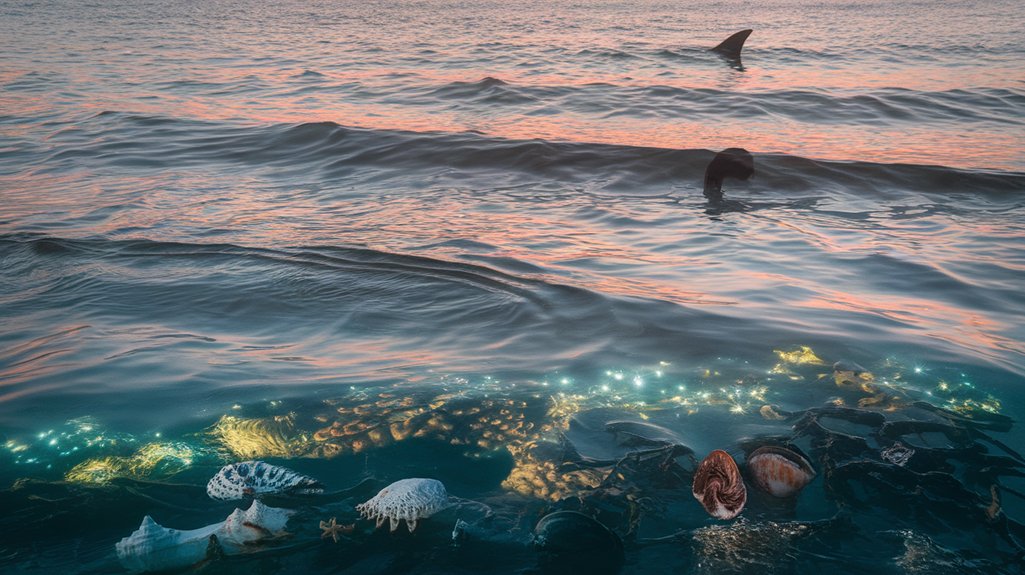
You’ve likely encountered reports of mysterious oceanic sightings and strange underwater sounds that have puzzled scientists for years. These phenomena often defy current understanding and suggest the presence of unknown or misunderstood marine entities. By examining documented cases and employing advanced acoustic analysis, you can contribute to unraveling these aquatic enigmas.
Mysterious Oceanic Sightings
How do we explain the mysterious oceanic sightings that have perplexed researchers and enthusiasts alike? You’ve likely heard tales of figures glimpsed in the waves, sparking debates about their origins. These sightings often describe humanoid forms, leading some to speculate about mermaids. However, a scientific lens suggests alternative explanations for these oceanic phenomena. Ocean currents, reflections, and marine life can create illusions, contributing to aquatic mysteries. For instance, seals or dolphins mistaken for humanoid shapes demonstrate how natural elements can deceive the eye. Historical records show consistent reports of such sightings, yet concrete evidence remains elusive. As you explore these accounts, consider the ocean’s vastness and complexity, reminding us that not all mysteries have clear-cut answers.
Strange Underwater Sounds
While the mysterious figures seen on the ocean’s surface often capture our imagination, the enigmatic sounds emanating from the depths present another layer of intrigue. Researchers have long documented sonar anomalies—unusual underwater sounds that defy easy explanation. These sounds, often referred to as oceanic echoes, reverberate through the deep, prompting questions about their origin. Some attribute these anomalies to geological activities or marine life, yet others wonder if they hint at unknown phenomena, perhaps even mythical creatures like mermaids.
When analyzing these sounds, scientists record and compare frequencies, seeking patterns or sources. Advanced sonar technology allows for more precise mapping of these echoes, but many remain unexplained. This mystery fuels both scientific inquiry and the imagination, inviting you to explore the ocean’s secrets.
The Science Behind Mermaids: Could They Exist?
Could mermaids truly exist in our vast oceans? To explore this, let’s dive into oceanic evolution and marine biology. The concept of mermaids raises questions about evolutionary adaptations in aquatic environments. In theory, if mermaids existed, they’d require unique physiological traits—a blend of human and aquatic features—to thrive underwater.
Marine biology shows us how diverse life forms adapt to survive in the ocean. Consider marine mammals like dolphins and whales, which evolved from land-dwelling ancestors. This suggests that significant evolutionary shifts are possible. However, the transition from human to mermaid would require extensive adaptations, such as modified respiratory systems and limb transformation.
While fascinating, the scientific evidence supporting mermaid existence remains speculative. No known marine species or evolutionary pathway aligns with the traditional image of a mermaid. Thus, while imagination captivates us, current evidence doesn’t substantiate the existence of mermaids within the framework of oceanic evolution.
Deep-Sea Discoveries That Defy Logic
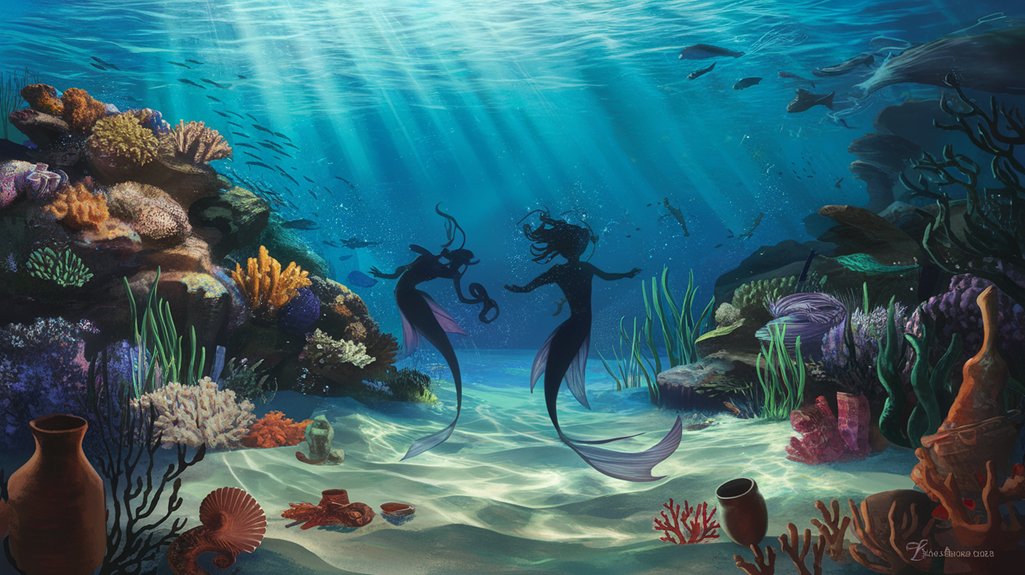
Even though mermaids remain in the realm of myth, the deep ocean is home to real-life wonders that challenge our understanding. You may find it surprising that deep-sea creatures like the anglerfish and gulper eel exhibit bizarre adaptations. The anglerfish, for example, uses a bioluminescent lure to attract prey in the darkness of the ocean depths. Such evolutionary marvels illustrate how life can thrive in environments once thought uninhabitable.
Moreover, oceanic phenomena like hydrothermal vents introduce ecosystems powered by chemosynthesis rather than sunlight. These vents support diverse life forms, including tube worms and giant clams, that derive energy from chemicals rather than photosynthesis. It’s these strange ecosystems that push the boundaries of biological comprehension.
As you delve into these oceanic mysteries, you’ll see that the deep sea holds extraordinary secrets. While mermaids might stay mythical, the discoveries beneath the waves are fantastical enough to inspire wonder.
Cultural Lore and Legends From Around the World
You might find it fascinating that mermaid mythologies appear in diverse cultures worldwide, from the sirens of Greek mythology to the ningyo of Japanese folklore. These legends often share symbolic themes, such as the duality of allure and danger, which suggest a common psychological or cultural origin. Studies indicate that these shared motifs could reflect universal human experiences with the sea, highlighting the importance of storytelling in preserving cultural values.
Global Mermaid Mythologies
While mermaids might seem like fanciful creatures of legend, their stories have roots in diverse cultures across the globe, each adding unique elements to the mythos. Tracing mermaid origins, you’ll find the Syrian goddess Atargatis, who transformed into a mermaid-like figure, highlighting the cultural significance of aquatic beings. In Greece, sirens were depicted as dangerous yet alluring, shaping perceptions of mermaids as both enchanting and perilous. In Japan, the ningyo emerged as a creature of fortune or disaster, with its capture believed to bring storms or longevity. African folklore introduces Mami Wata, a water spirit embodying beauty and wealth. Each tradition underscores how diverse societies interpret mermaids, revealing the profound impact these figures have on human culture and belief systems.
Shared Symbolism Across Cultures
Although mermaid myths diverge across cultures, they often convey shared symbolism that reveals universal human concerns and values. You might notice that water deities, like mermaids, consistently embody both allure and danger, reflecting our complex relationship with the sea. This dual nature appears in diverse cultural lore, from the Greek sirens to the Japanese ningyo. Such figures personify the unpredictable power of nature and the consequences of human curiosity.
Shared cultural beliefs about mermaids also highlight universal mythological themes of transformation and the unknown. These themes resonate with human experiences of change and exploration. By analyzing these myths, you gain insight into how different cultures interpret similar existential questions. These shared narratives suggest a collective effort to understand nature’s mysteries and humanity’s place within it.
The Role of Mermaids in Modern Media and Popular Culture
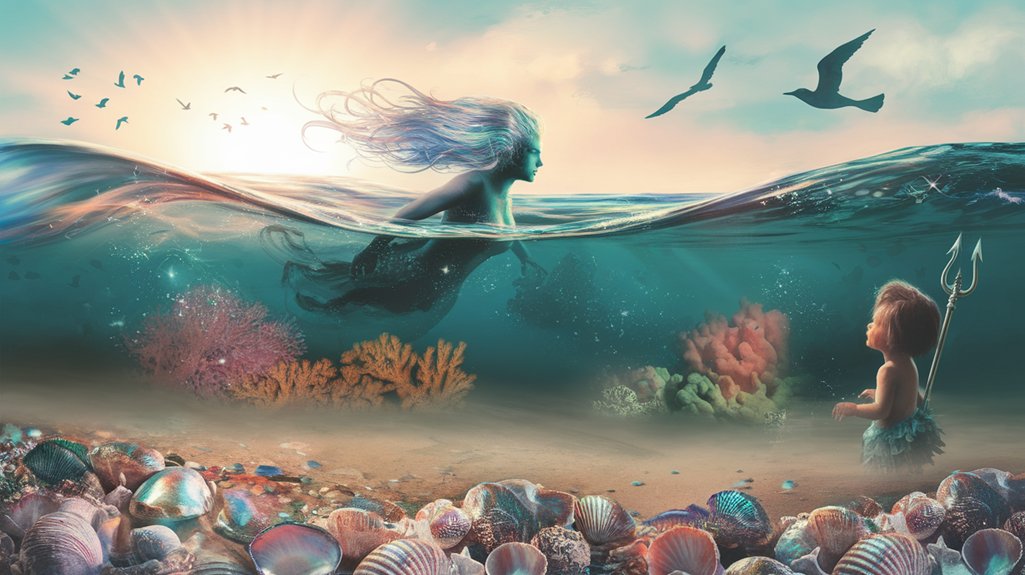
Mermaids have carved a unique niche in modern media and popular culture, serving as symbols of mystery, allure, and transformation. Their recurring presence in films, literature, and television shows underscores their compelling nature. From Disney’s “The Little Mermaid” to Neil Gaiman’s “Stardust,” mermaids embody themes of longing and metamorphosis. This mermaid symbolism often reflects our fascination with the unknown depths of the ocean and the boundaries between human and aquatic realms.
In visual media, mermaids serve as powerful aquatic representations. Their depiction often combines elements of fantasy and reality, inviting audiences to explore the interplay between myth and nature. This duality aids in examining human emotions and societal issues. For instance, films like “Splash” and series like “H20: Just Add Water” use mermaids to address themes of identity and belonging. Thus, mermaids remain relevant, offering insight into human experiences and cultural narratives.
Frequently Asked Questions
What Do Mermaids Eat in Their Natural Habitat?
In exploring mermaid diets, you’d consider their underwater foraging habits. They’d likely consume aquatic plants, small fish, and crustaceans. Analyzing marine ecosystems, you can see how these foods provide essential nutrients for survival and energy.
Can Mermaids Communicate With Humans?
In the symbolic dance of ocean currents, mermaid language might bridge gaps with humans. Evidence suggests acoustic signals play roles in human interactions, hinting at possible communication, though scientific proof remains elusive. You’d need further research to confirm.
How Do Mermaids Reproduce?
In mermaid mythology, you’d analyze aquatic reproduction by examining species like fish and marine mammals. Mermaids might mimic these processes, potentially involving external fertilization or live birth, but scientific evidence remains speculative, enhancing the mystery of their existence.
Are Mermaids Considered Endangered Species?
You might wonder if mermaids are endangered. Scientifically, mermaid conservation doesn’t apply due to their mythical status, but their folklore significance highlights cultural preservation. Analyzing myths enriches understanding, not environmental action, given current evidence.
Do Mermaids Have Any Known Predators?
You’d consider mermaid predators by analyzing underwater threats like sharks or giant squids. Scientifically, no evidence solidly confirms their existence, but hypothetically, such marine creatures could pose significant risks to any elusive, aquatic beings resembling mermaids.
Conclusion
As you dive into the depths of this mystery, let the waves of evidence wash over you. Consider the tantalizing historical accounts, the enigmatic sightings, and the aquatic anomalies that defy explanation. Science may not yet have unraveled the truth, but the siren’s call of possibility resonates. Like a shadow in the deep, mermaids linger at the edge of our understanding, challenging you to keep your mind open and your curiosity afloat.


